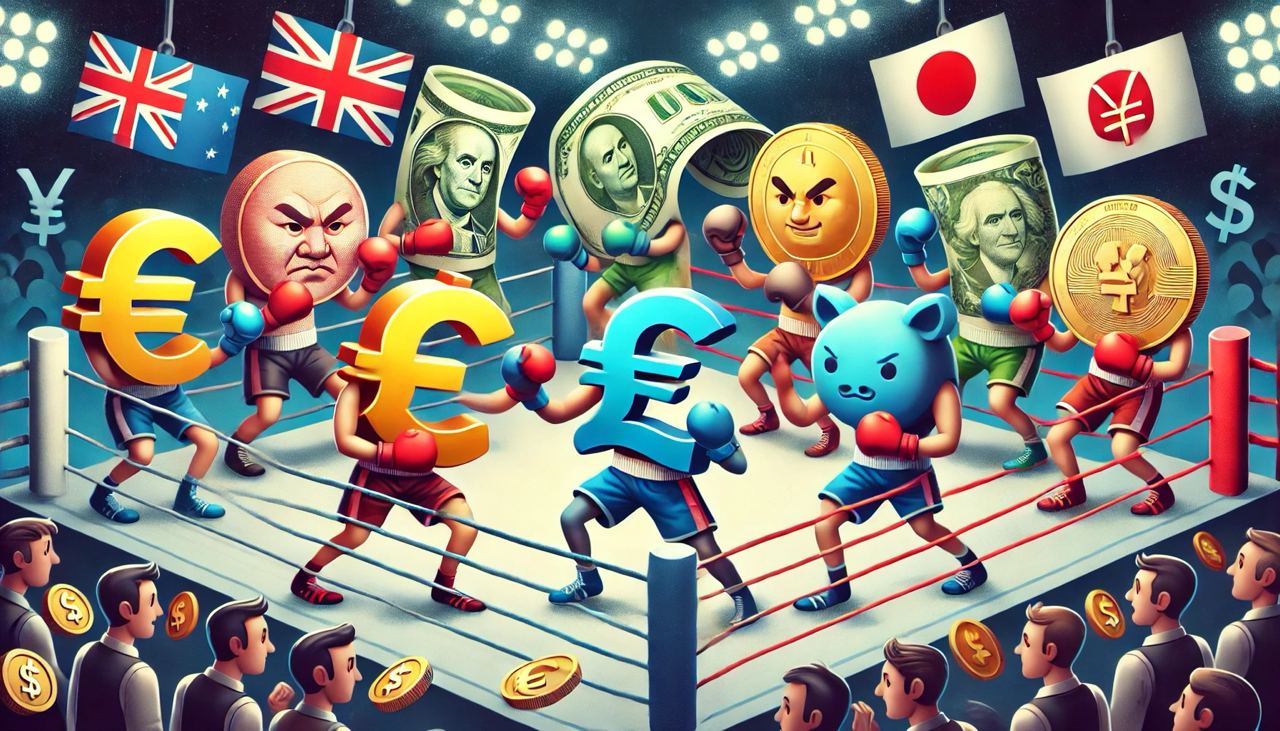Learn Trading for Free and Without Registration
An Online Glossary to Study Trading Independently
What is currency correlation?

What is Currency Correlation? A Comprehensive Guide
The foreign exchange market is a complex system where the movement of one currency pair can influence other assets. The relationship between currency pairs is called currency correlation. Understanding this phenomenon allows traders and investors to make more informed trading decisions, avoid duplicate positions, and manage risks effectively.
In this article, we will cover:
- What currency correlation is and why it matters.
- How the correlation coefficient is calculated.
- Types of correlation: positive, negative, and neutral.
- How to use currency correlation in trading and portfolio management.
Definition of Currency Correlation
Correlation is a statistical measure that indicates how strongly two financial instruments move in the same direction or, conversely, in opposite directions. In the context of the forex market, correlation shows how the price movement of one currency pair affects another.
The currency correlation coefficient ranges from -1 to +1:
- +1 (Perfect Positive Correlation) – Currency pairs move in the same direction. If one pair rises, the other will also rise.
- 0 (No Correlation) – The movements of currency pairs are unrelated.
- -1 (Perfect Negative Correlation) – Currency pairs move in opposite directions. If one pair rises, the other falls.
How is the Correlation Coefficient Calculated?
To calculate the correlation coefficient between two currency pairs, the Pearson correlation coefficient formula is used. This method helps assess how closely the price changes of two instruments are related over a given period.
The main principles of calculation include:
- Taking historical closing prices of two currency pairs over a specific period.
- Computing the average value for each instrument.
- Calculating the deviations of prices from the average.
- Determining the correlation using a specific formula.
Modern trading platforms such as MetaTrader, TradingView, and others automatically calculate the correlation coefficient between currency pairs, simplifying the analysis process.
Types of Currency Correlation
Positive Correlation
When two currency pairs have a positive correlation, they move in the same direction. Examples include:
- EUR/USD and GBP/USD – These pairs typically exhibit a strong positive correlation. If the euro strengthens against the dollar, the British pound is also likely to appreciate.
- AUD/USD and NZD/USD – Both pairs are influenced by commodity markets and investor sentiment, making their movements similar.
Negative Correlation
Negative correlation means that currency pairs move in opposite directions. Examples include:
- EUR/USD and USD/CHF – When the euro rises against the dollar, the Swiss franc often weakens.
- GBP/USD and USD/JPY – If the U.S. dollar strengthens against the British pound, it may also strengthen against the Japanese yen, leading to opposite movements.
Neutral Correlation
Some currency pairs are barely related, meaning their price movements do not follow a consistent pattern. Examples include:
- USD/CAD and AUD/JPY – These pairs are affected by different macroeconomic factors (oil prices and commodity markets), resulting in minimal correlation.
How to Use Currency Correlation in Trading?
1. Avoiding Duplicate Positions
Traders may unknowingly double their risk by opening trades on highly correlated currency pairs. For instance, buying both EUR/USD and GBP/USD simultaneously is effectively doubling an exposure against the U.S. dollar, increasing potential risk.
2. Diversifying the Portfolio
Using currency pairs with low or negative correlation helps diversify risks. For example, a trader might open positions in EUR/USD and USD/CHF to reduce the impact of sudden market fluctuations.
3. Confirming Trading Signals
If a trader sees EUR/USD breaking a resistance level but GBP/USD remains in a sideways trend, it may indicate a weak buy signal. Analyzing correlated pairs helps validate trade decisions.
4. Hedging Positions
Negative correlation allows traders to hedge their positions. For example, if an investor takes a long position in EUR/USD, they might simultaneously sell USD/CHF to offset potential losses.
Correlation and Market Changes
It is important to understand that currency correlation is not a fixed value. It can change due to various factors, including:
- Economic events – Central bank decisions, macroeconomic data releases.
- Geopolitical influences – Political instability or trade wars can disrupt traditional correlations.
- Seasonality and liquidity – Correlations may weaken during certain times of the year.
Conclusion
Currency correlation is an essential tool for traders, helping them understand the relationships between different assets, avoid unnecessary risks, and develop more effective strategies. However, it is crucial to remember that correlation is not a constant metric—it evolves over time and should be reassessed periodically.
By applying correlation analysis, traders can not only minimize losses but also discover new trading opportunities through effective capital allocation and risk management.


